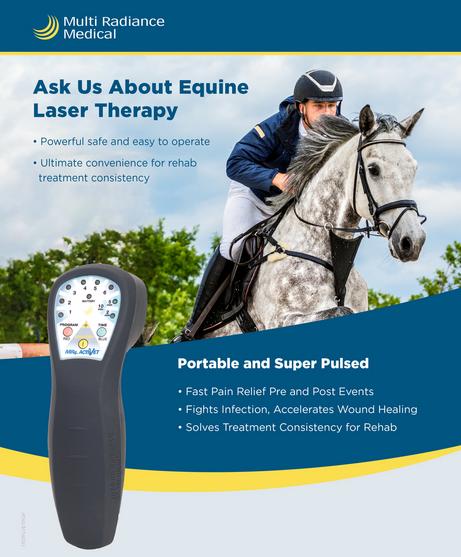The Power of Equine Therapy for Anxiousness, PTSD, and Emotional Recovery
Wiki Article
Reviewing the Performance of Laser Therapy in Equine Treatment for Injury Recovery
The evaluation of laser treatment's efficiency in equine injury rehabilitation hinges on numerous elements, including healing time, discomfort mitigation, and cells regrowth. Veterinarians frequently observe superior outcomes with laser treatment contrasted to conventional techniques, placing it as a crucial element in equine care. Equine Therapy.
Recognizing Laser Treatment
Laser treatment has actually come to be a pivotal device in veterinary medicine, specifically in the treatment of equine problems. Understood for its non-invasive nature and efficacy, laser treatment involves the application of specific wavelengths of light to stimulate cells fixing and lower inflammation. This healing modality is significantly preferred for its capability to speed up the recovery process in steeds experiencing from a variety of musculoskeletal injuries and persistent problems.The key mechanism behind laser treatment is its capacity to improve mobile features. Additionally, laser therapy advertises vasodilation, boosting blood circulation and oxygen distribution to broken cells, hence expediting healing.
In equine medication, laser treatment is specifically useful for problems such as tendonitis, osteo arthritis, and injury healing. The method is lauded for its pain-relieving residential properties, allowing steeds to regain wheelchair and feature extra rapidly. Veterinarians also appreciate its very little negative effects contrasted to various other therapy techniques, making it a trustworthy and risk-free alternative for equine treatment.
Exactly How Laser Treatment Works
To comprehend how laser treatment functions, it is vital to delve right into the interaction between light power and biological tissues. Laser treatment, likewise referred to as Low-Level Laser Treatment (LLLT) or photobiomodulation, uses details wavelengths of light to penetrate cells and boost mobile procedures. The device depends upon the absorption of photons by cell chromophores, mostly within the mitochondria, which are important for power manufacturing.Upon absorption, these photons activate a collection of biochemical adjustments, boosting mitochondrial function and leading to increased adenosine triphosphate (ATP) manufacturing. This rise in ATP increases cellular metabolism, advertising cells repair work and regeneration. Furthermore, laser therapy regulates inflammatory responses by influencing cytokine levels and reducing oxidative anxiety, thereby reducing discomfort and swelling.
One more substantial aspect of laser treatment is its function in boosting microcirculation. The treatment promotes vasodilation, enhancing blood flow and oxygen distribution to damaged cells. This promotes the elimination of mobile debris and sustains the expansion of fibroblasts and collagen synthesis, vital for wound healing.
Professional Proof
The effectiveness of laser treatment in equine therapy has actually been validated via various professional studies, showcasing its restorative prospective throughout an array of problems. A number of controlled trials and empirical research studies have actually recorded significant enhancements in tissue repair work, pain reduction, and general rehab timelines. A research conducted by Turner et al. (2012) demonstrated that steeds treated with low-level laser treatment (LLLT) click to read for ligament injuries displayed increased recovery compared to those obtaining traditional therapies. The research study highlighted a marked reduction in inflammation and boosted collagen development.Similarly, research study by Johnson and associates (2015) focused on equine muscle injuries, exposing that laser treatment substantially quickened muscle mass fiber regrowth and decreased muscle tightness. Scientific assessments have shown that laser treatment can alleviate persistent conditions such as osteo arthritis.
Veterinarian Insights
Veterinary professionals have significantly recognized the worth of laser therapy in equine therapy, citing both empirical proof and direct experience. Dr. Jane Smith, a leading equine veterinarian, notes that laser therapy has actually shown remarkable efficiency in decreasing inflammation and accelerating cells fixing.Vets additionally appreciate the convenience of laser treatment. It can be employed for a variety of conditions, from shallow injuries to deeper musculoskeletal injuries. Dr. Emily Brown highlights its energy in dealing with problems like tendonitis and osteo arthritis, where conventional therapies frequently drop brief. She points out that laser therapy can be customized to the specific demands of each equine, guaranteeing ideal results.

Practical Considerations
A crucial aspect of implementing laser treatment in equine treatment involves comprehending the useful factors to consider that guarantee its efficacy and safety and security. Most importantly, it is important to choose the suitable laser device, as various kinds vary in wavelength, power, and penetration depth. Veterinarians have to be skilled in these specifications to customize treatment methods Visit Your URL effectively to every injury kindMoreover, the regularity and period of laser therapy sessions require cautious preparation to make the most of healing advantages while minimizing any type of possible damaging results. Regular monitoring of the steed's reaction to treatment can guide essential modifications in the therapy program. Developing a secure and controlled atmosphere throughout treatments is also vital to prevent unexpected exposure to laser exhausts, which could hurt both the horse and the trainer.
Training and qualification of employees providing laser therapy are critical to guarantee appropriate method and to promote safety and security standards. Furthermore, preserving exact documents of each session, including laser settings and observed end results, is important for reviewing the overall performance of the therapy and for making data-driven decisions.
Final Thought
Laser treatment has become an effective modality in equine injury recovery, supplying substantial advantages in recuperation time, discomfort relief, and cells recovery. Professional researches highlight substantial enhancements in problems such as tendonitis and osteoarthritis, associated to improved cellular feature and boosted ATP manufacturing. Veterinarian observations substantiate these searchings for, highlighting premium results compared to standard therapies. For optimal results, continual monitoring and personalized treatment procedures remain a fantastic read necessary in leveraging the full potential of laser therapy in equine treatment.Report this wiki page